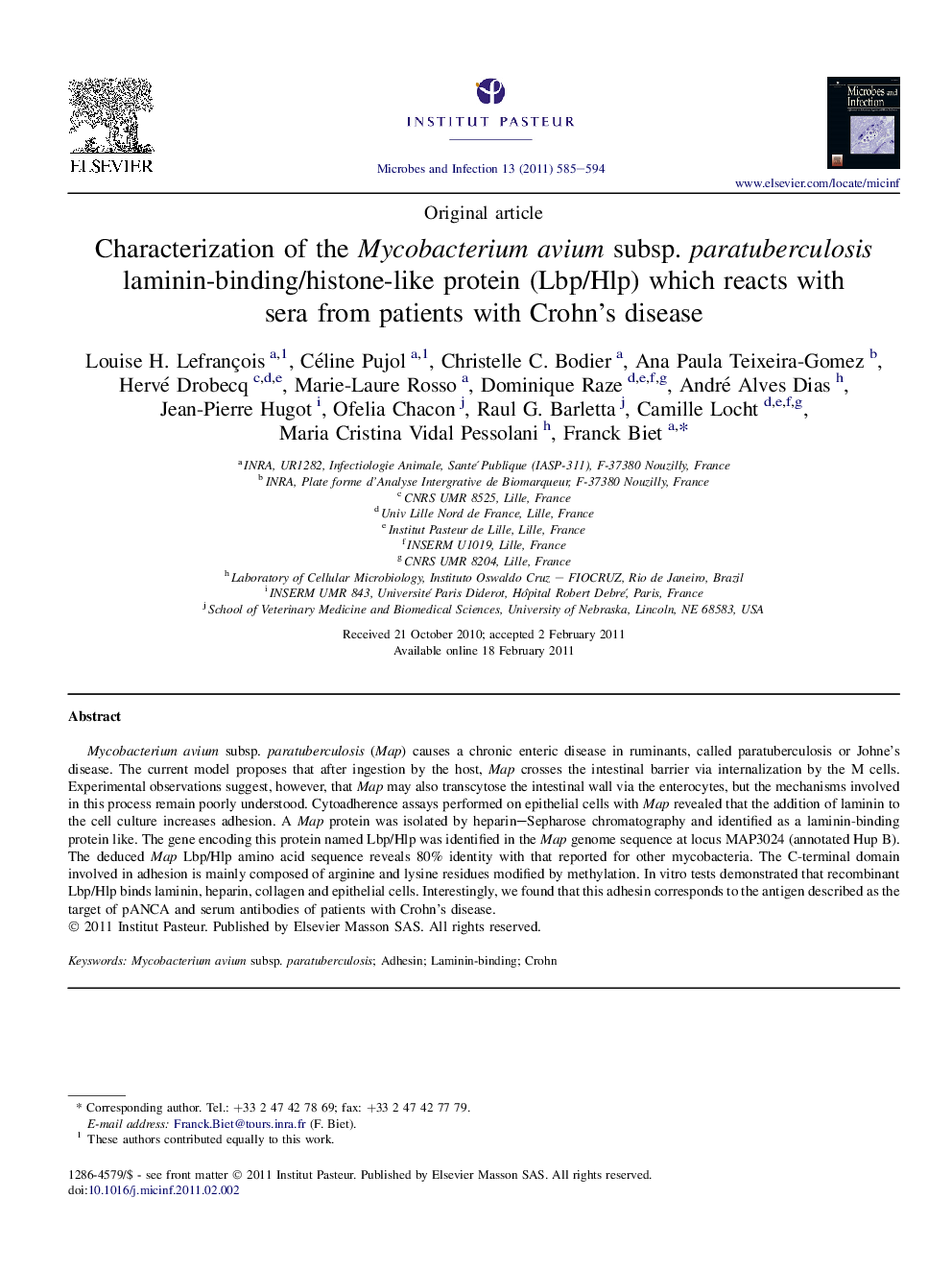| Article ID | Journal | Published Year | Pages | File Type |
|---|---|---|---|---|
| 3414938 | Microbes and Infection | 2011 | 10 Pages |
Mycobacterium avium subsp. paratuberculosis (Map) causes a chronic enteric disease in ruminants, called paratuberculosis or Johne’s disease. The current model proposes that after ingestion by the host, Map crosses the intestinal barrier via internalization by the M cells. Experimental observations suggest, however, that Map may also transcytose the intestinal wall via the enterocytes, but the mechanisms involved in this process remain poorly understood. Cytoadherence assays performed on epithelial cells with Map revealed that the addition of laminin to the cell culture increases adhesion. A Map protein was isolated by heparin–Sepharose chromatography and identified as a laminin-binding protein like. The gene encoding this protein named Lbp/Hlp was identified in the Map genome sequence at locus MAP3024 (annotated Hup B). The deduced Map Lbp/Hlp amino acid sequence reveals 80% identity with that reported for other mycobacteria. The C-terminal domain involved in adhesion is mainly composed of arginine and lysine residues modified by methylation. In vitro tests demonstrated that recombinant Lbp/Hlp binds laminin, heparin, collagen and epithelial cells. Interestingly, we found that this adhesin corresponds to the antigen described as the target of pANCA and serum antibodies of patients with Crohn’s disease.
